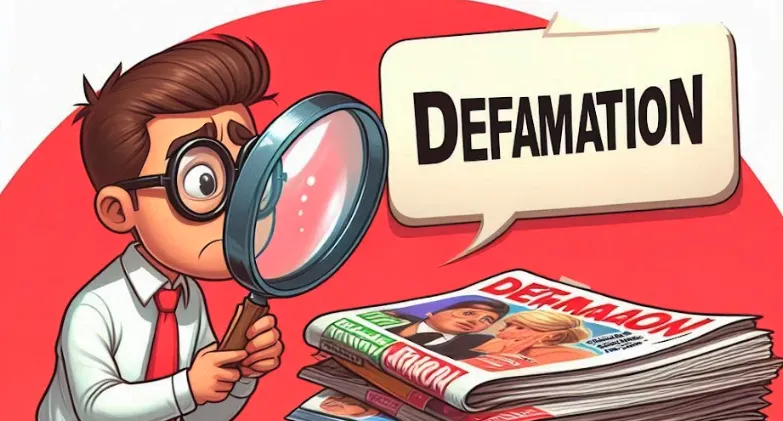Understanding the Right to Information (RTI) Act, 2005 and How to File an RTI Application
advertisement
Curious About How To See What's Happening Behind The Scenes In The Government? The RTI Act Lets You Do Just That!
Overview of the Right to Information (RTI) Act, 2005
The Right to Information (RTI) Act, 2005, is an important law in India that allows people to get information from government bodies. This law helps make the government more transparent and responsible. It was passed on June 15, 2005, and fully came into effect on October 12, 2005. The RTI Act has played a key role in creating a more informed and involved society.
Key Provisions and Objectives of the Act
The Right to Information (RTI) Act is designed to make government work more accessible to the public and reduce corruption by letting the common mass have the ability to get information. Here are some key points about the RTI Act:
- Right to Access Information: Anyone can ask for information from any government office, and they must get a reply within 30 days.
- Proactive Disclosure: Government offices must regularly share certain information on their own so the public can easily find it.
- Public Information Officers (PIOs): Each government office must have officers who handle RTI requests.
- Fee Structure: There are small, affordable fees to file RTI requests. A person who wants to get information from a government office needs to include a payment of Rs. 10/- with their request. This payment can be made by sending a demand draft, a banker’s cheque, or an Indian Postal Order made out to the Accounts Officer of the office. Alternatively, they can pay Rs. 10/- in cash directly to the office and get a receipt.
- Penalties: If government officials don’t provide information within the required time or if they give incorrect information, they can face penalties under the RTI Act. The fines are as follows:
- If an official fails to provide the requested information within the 30-day deadline, they can be fined up to Rs. 25,000/-.
- Additionally, officials can be fined up to Rs. 250/- per day for each day of delay in providing the information, if they deliberately delay or obstruct the process.
- Officials who provide incorrect or misleading information can also face similar fines.
These penalties are meant to ensure that officials follow the rules and provide accurate and timely information.
advertisement
Process of Filing an RTI Application
Filing an RTI application is a straightforward process designed to be accessible to all citizens. Here are the steps involved:
- Identify the Public Authority: Find out which government office has the information you need.
- Draft the RTI Application: Write a formal request for information. You can use a specific format if the office provides one.
- Submission: Send your request to the Public Information Officer (PIO) of the relevant office. You can do this in person, by mail, or through their online system if available.
- Pay the Fee: Pay the required fee as mentioned previously as directed by the office. You can pay this in cash, by demand draft, or through an online payment method.
Here’s how you can file an RTI (Right to Information) application online in simple steps:
advertisement
- Visit the RTI Portal: Go to the official RTI online portal of your government.
- Register or Log In: If you’re new, create an account by registering with your details. If you already have an account, just log in.
- Fill Out the Form: Choose the department you want to get information from. Then, fill out the online form with your question or request.
- Submit the Application: Review your information and submit the application.
- Receive a Tracking Number: After submission, you’ll get a tracking number. Use it to check the status of your request.
That’s it! You’ll receive a response from the department within the time frame specified by the RTI Act.
Format and Required Information for RTI
An RTI application must be clear and concise, containing specific details to facilitate the processing of your request. The required information typically includes:
advertisement
- Applicant's Details: Name, address, and contact information.
- Specific Information: Clear description of the information or documents requested.
- Details of the Public Authority: Name of the department or public authority from which the information is sought.
- Application Fee: Details of the fee payment (if applicable).
Sample RTI Application Format:
To,
The Public Information Officer,
[Name of the Public Authority],
[Address]
Subject: **Request for Information under the RTI Act, 2005**
Sir/Madam,
I, [Your Name], a resident of [Your Address], wish to seek information under the RTI Act, 2005. The details of the information required are as follows:
1. [Specific Query 1]
2. [Specific Query 2]
I have enclosed the application fee of Rs. 10/- [mode of payment].
Kindly provide the information at the earliest.
Thank you.
Yours faithfully,
[Your Name]
[Contact Details]
Role of Public Information Officers (PIOs)
Public Information Officers (PIOs) play a crucial role in the RTI framework. Their responsibilities include:
- Receiving RTI Applications: Public Information Officers (PIOs) are responsible for receiving and handling these requests.
- Providing Information: PIOs must give the requested information within 30 days. If there is a delay, they need to explain why.
- Guidance and Assistance: PIOs should help people with their questions and provide guidance on how to use the RTI process.
Appeals and Grievance Redressal Mechanisms
If someone is dissatisfied with the response they get or if they do not receive any information within the required time, they can appeal the decision. Here’s how the appeal process works:
advertisement
- First Appeal: The person can file an appeal with the First Appellate Authority within the same government office. This appeal should be decided within 30 days.
- Second Appeal: If they’re still not satisfied after the first appeal, they can take their case to the Central or State Information Commission. This commission has the power to impose fines on officials who don’t follow the rules and can order them to provide the requested information.
Exemptions and Limitations under RTI
The RTI Act is designed to make government operations open and clear, but it also has some exceptions to protect sensitive information as per Section 8 of the Right To Information Act, 2005. Here are the main exceptions:
- National Security: Information that could affect the country’s safety or its control over its own affairs is kept secret.
- Personal Information: Private details about individuals are not shared unless there is a strong public interest.
- Third-Party Information: Information given in confidence by a foreign government is not disclosed.
- Commercial Interests: Information that could harm a business’s competitive edge is protected.
- Protected by Law: Information that a court or tribunal has specifically ordered to be kept secret is not shared.
advertisement
Case Studies and Success Stories
The RTI Act has played a key role in uncovering corruption, making government actions more transparent, and giving people more power. Here are a few notable successes:
Adarsh Housing Society Scam: RTI activists discovered problems in how flats meant for war widows were being given out. This led to major investigations and some officials resigning.
Mid-Day Meal Scheme: RTI requests** showed problems with how the school meal program was being run**. This led to improvements in how the program is monitored and managed.
Public Distribution System (PDS): RTI inquiries revealed corruption and problems in the food distribution system. This resulted in changes to policies and better ways of distributing food.
advertisement
Conclusion
The RTI Act, 2005, is a significant tool for making Indian government work more open and accountable. It allows people to request information from government offices, which helps ensure that officials are honest and transparent.
To make the most of this law, it's important to understand how to file an RTI request, the role of Public Information Officers (PIOs), and the rules about what information can be kept private and how to address issues if something goes wrong.
Legal debates often focus on the balance between transparency and privacy, as well as the effectiveness of RTI in different regions and types of public authorities.
Recent updates suggest that while the RTI Act has led to many success stories, there are ongoing discussions about improving the system, including better training for PIOs and clearer guidelines on handling sensitive information. Overall, the RTI Act remains a key element of India's democracy, helping to keep public officials accountable and promote a more informed and engaged citizenry.
advertisement
Frequently Asked Questions (FAQs)
1. What is the RTI Act, 2005?
The RTI Act, 2005, is a law in India that allows citizens to request information from government offices. It aims to make the government more transparent and accountable by providing people with the right to access information.
2. How do I file an RTI application?
To file an RTI application, you need to identify the government office that holds the information you want, draft a clear request, and submit it to the Public Information Officer (PIO) of that office. Include a payment of Rs. 10/- as a fee, which can be made by demand draft, banker’s cheque, Indian Postal Order, or cash with a receipt.
3. What is the role of Public Information Officers (PIOs)?
PIOs are responsible for receiving RTI applications, providing the requested information within 30 days, and assisting applicants with their requests. They must also explain any delays in providing information.
4. What if I don’t receive a response to my RTI application?
If you don’t receive a response within 30 days, you can file a first appeal with the First Appellate Authority within the same office. If still unsatisfied, you can escalate the issue to the Central or State Information Commission.
5. What information is exempt from disclosure under the RTI Act?
Certain types of information are exempt, including those affecting national security, personal privacy, third-party confidential information, commercial interests, and information protected by law.
advertisement
REFERENCES:
- Right to Information Act, 2005
- Free Required Under RTI Act
- Appointing Officers to RTI Positions: Public Information Officers
- Penalties for Failing to Release Information
- Central Information Commission
- Guidelines For Use Of RTI Online Portal
- RTI Act, 2005
- What is the Adarsh Scam
- Info under RTI Act MDM Division
- Public Distribution System PDS

Written by Seersha Chaudhuri
Driven legal professional with a BA LLB and a knack for writing and media reporting. Previously, I’ve crafted legal documents and managed court proceedings at Terkiana PC, focusing on immigration law. I’m also brushing up on my Spanish with Duolingo—learning a new language has never been this fun! Eager to blend my expertise in legal research with my passion for global policy and creative writing. Apart from being a professional, I am a full time lover of fish, dystopian fiction and Brooklyn 99.
advertisement
Further Reading
advertisement






